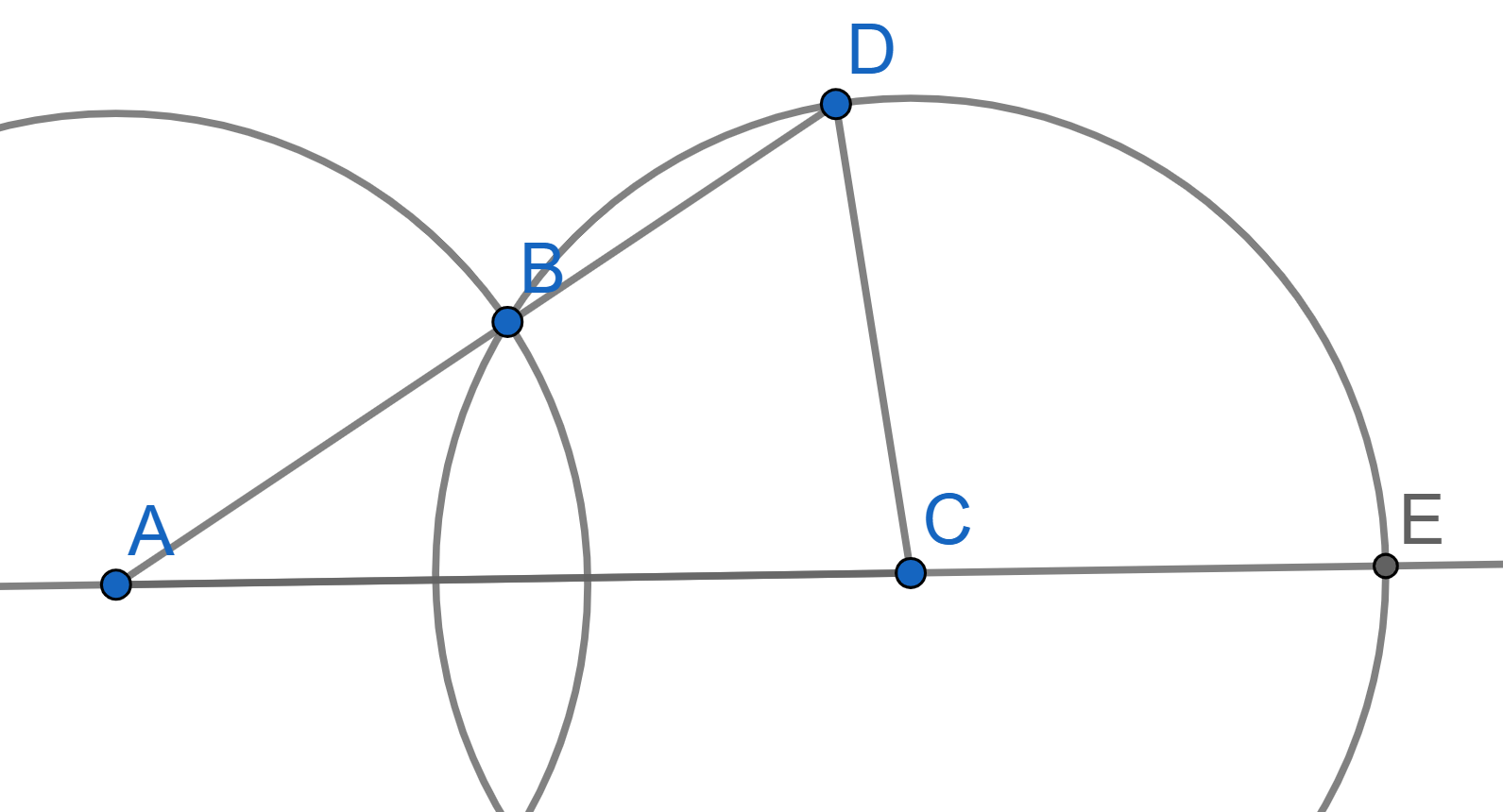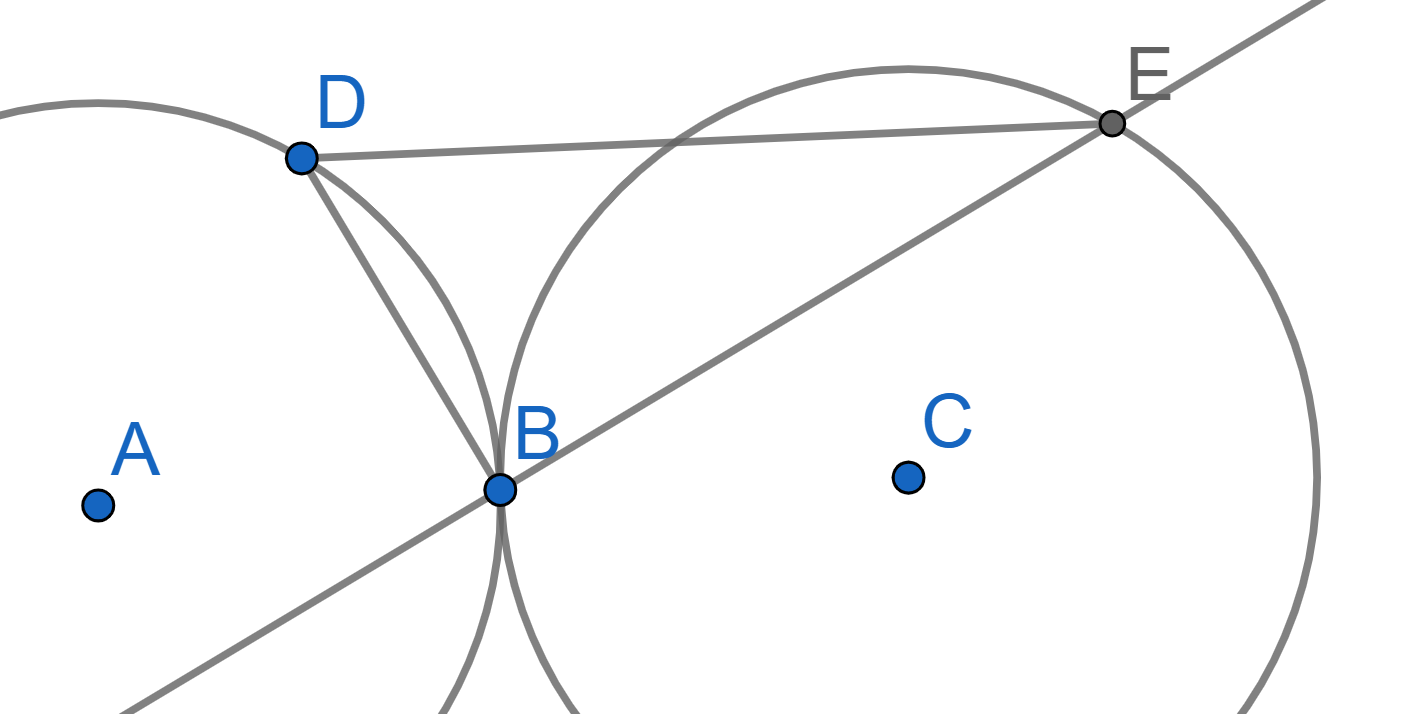Problems
On a line segment of length 1, \(n\) points are given. Prove that the sum of the distances from some point out of the ones on the segment to these points is no less than \(n / 2\).
Prove that in any triangle the sum of the lengths of the heights is less than the perimeter.
\(ABC\) is a right angled triangle with a right angle at \(C\). Prove that \(c^n > a^n + b^n\) for \(n > 2\).
Two intersecting circles of radius \(R\) are given, and the distance between their centers is greater than \(R\). Prove that \(\angle ECD = 3\angle CAD\).

Prove that, when a circle is translated it becomes a circle.
Two circles of radius \(R\) touch at point \(B\). On one of them, point \(D\) is chosen and on the other point \(E\) is chosen. These points have a property of \(\angle DBE = 90^{\circ}\). Prove that \(DE = 2R\).

Two circles of radius \(R\) intersect at points \(B\) and \(D\). Consider the perpendicular bisector of the segment \(BD\). This line meets the two circles again at points \(F\) and \(G\), both chosen on the same side of \(BD\). Prove that \[BD^2 + FG^2 = 4R^2.\]
Inside the rectangle \(ABCD\), the point \(E\) is taken. Prove that there exists a convex quadrilateral with perpendicular diagonals of lengths \(AB\) and \(BC\) whose sides are equal to \(AE\), \(BE\), \(CE\), \(DE\).
Prove that, with central symmetry, a circle transforms into a circle.
The opposite sides of a convex hexagon are pairwise equal and parallel. Prove that it has a centre of symmetry.